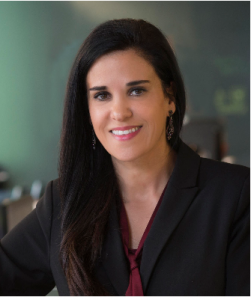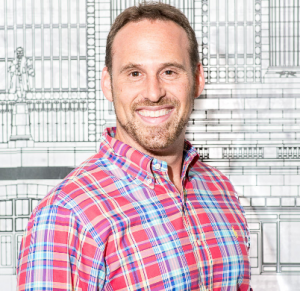Four experts in life sciences and digital health development, commercialization, and investment peered into their proverbial crystal balls to offer insights on “What’s Hot in Life Sciences: A Look at the 2019 Trends and What’s on the Horizon for 2020”—the title of a panel discussion held recently at JLABS@NYC, the Johnson & Johnson Innovation health sciences incubator housed at the New York Genome Center in SoHo.
Joining the panel’s moderator Stan Kachnowski, PhD, MPA, CSEP, chair of HITLAB, a New York-based innovation and teaching lab dedicated to improving the quality and accessibility of healthcare worldwide, were:
- Jeremy Abbate, vp and publisher, Scientific American, which is marking its 175th anniversary in 2020.
- Elise Lelon, managing director, Plum Alley Investments, a venture capital firm that invests at the Series A-B stage, in deep tech and frontier healthcare companies, with at least one female founder.
- Dan Seewald, founding partner and CEO, Deliberate Innovation, whose mission is to help transform organizational leaders into “deliberate” innovators, and former head of worldwide innovation at Pfizer.
- Daphne Zohar, founder and CEO, PureTech, a clinical-stage biotechnology company focused on discovering, developing, and commercializing treatments for intractable cancers, lymphatic and gastrointestinal diseases, central nervous system disorders, and inflammatory and immunological diseases.
Following are highlights of the panel discussion:
“BIG” thinking

Zohar said a source of excitement for PureTech is its work to develop treatments that leverage the connectivity between the brain, the immune system, and the gut, what it calls the “BIG Axis.”
“This concept of crosstalk between the systems touches on a number of areas, including the microbiome,” Zohar explained. “In particular, we’re really excited about the lymphatic system, as being an underappreciated player in immune cell trafficking, and that cuts across a number of different diseases. We think that’s a really important area from the science and business perspective.”
PureTech’s internal R&D programs are focused on harnessing the lymphatic system and related immunology mechanisms for the treatment of cancer, immunological, lymphatic, and CNS-related disorders. The company lists three internal programs: the Phase I LYT-100, being developed for lymphedema; and two preclinical candidates, LYT-200 for solid tumors, and LYT-210 for solid tumors and autoimmune disorders.
Through affiliate companies, PureTech is also advancing 24 product candidates and one product cleared by the FDA—Plenity, the only prescription weight management product cleared for use by overweight adults with a BMI as low as 25 kg/m2, with and without comorbidities such as hypertension, type 2 diabetes, or dyslipidemia.
Blockchain hope and hype

Kachnowski said the failure of blockchain to come into widespread use in the life sciences has convinced at least one client, who he described as a senior executive in the industry, that the technology is more hype than hope—in turn further diminishing its prospects for quick adoption.
But blockchain is more of a long-term play, he cautioned, citing demonstration projects with life-sci applications now in progress, such as in clinical trials and supply chain operations.
“It’s kind of like electricity and running water. It fuels many other technologies and advancements, but it’s not going to happen overnight,” Kachnowski said. “There’s a lot of excitement, and when we don’t see that immediate blast, that huge success, we really start to call into question, is it real? The answer is, it probably is real.”
CRISPR and genome editing

Lelon noted that her firm was an early investor in Mammoth Biosciences, which was launched last year with the goal of developing an easy-to-use and affordable point-of-care test enabling fast, simultaneous detection of multiple conditions, in real-time, both in the hospital and at home, through a single credit card-sized strip form factor. Mammoth’s five co-founders include CRISPR pioneer Jennifer Doudna, PhD, of UC Berkeley.
“CRISPR has garnered a big percentage of the venture dollars recently. I think it will continue to,” Lelon said. “There are a lot of ethical issues, regulatory issues that may hinder that particular market segment. But the opportunities are really endless, and I think if you miss that boat, it’s too bad.”
Seewald recalled how a few months back, the New Lab tech startup hub in Brooklyn hosted a session on gene modification gene editing.
“Every scientist that I reached out to participate in the panel, they started bench research, they’re doing research somewhere else now affiliated with an institution, and now they have a startup company,” Seewald said. “It’s an interesting validation that every bright mind out there that’s done some work directly, or even indirectly, in genomics research is now spawning a startup company or even a scale-up depending where they are. And they’re getting funding. Every one of them had been relatively well-funded that we had come across.”
“That’s a manifest trend that I think will continue to grow,” Seewald added. “Machine learning/AI combined with the ability to use the power and the scale of what we can do now with genetic sequencing—what the power of CRISPR is, is that it’s going to change fundamentally the way the pharmaceutical and life sciences industries work in the next decade or less. To me, that’s a massive transformation.”
Brain drain or brain gain?
The panel’s discussion of CRISPR sparked an audience question: Given China’s looser regulatory environment for genome editing, were panelists seeing a “brain drain” of researchers from the United States to the world’s most populous nation?

“Because there are fewer regulatory constraints, what some of the scientific experts that we’re working with have said is that they’re doing things that we are a little bit more reluctant to do because of political and regulatory headwinds,” Seewald said. “Of course, you have to weigh things with an appropriate ethical framework. But that said, it doesn’t stop from recognizing that they are making some advances just in that specific area.”
Abbate acknowledged that some professionals may be seeing a migration of research talent to China, but added that he was not one of them: “I think the jury is still out.” He also noted that Scientific American’s WorldVIEW county-by-country innovation scorecards in recent years have sought to measure against brain drain. The 2016 Scorecard, for example, included criteria such as “talent retention” as a reciprocal of brain drain, as well as “brain gain” or share of global students studying outside their country.
“There is in certain areas and in certain pockets, people saying, ‘Maybe the climate is better, there’s more grant money available in China to do some new things,’” Abbate observed. “Still, to this day, the U.S. is the place where most scientists want to work, and commercialize their work, and that’s because of a multitude of factors.”
The U.S., Abbate said, built a very strong regulatory and IP environment in the post-World War II period, when a wave of scientists emigrated to the U.S., and when the federal government expanded NIH programs, and especially funding, to promote research. The NIH budget multiplied from $8 million in 1947 to more than $1 billion in 1966.
“I’m not convinced there is a huge brain drain and brain gain over to China right now. Is that pre-ordained to be the case in the next five or 10 years? Maybe not.”
Protecting data privacy

Seewald and Abbate pinpointed patient concerns about data privacy as a challenge to healthcare and the life sciences industry—a challenge they said the industry can overcome.
“We are going to find ways to be able to not violate people’s privacy but to even make it easier and to make more informed consent about what we share,” Seewald said. “The more data gets democratized, the better we’re all going to be.”
Abbate noted that large-scale data breaches affecting the nation’s largest retailers, including Home Depot and Target, have not stopped shoppers from shopping online: “We feel like the risks are worth it.
“Once we crystallize what those benefits are in the years to come, of truly being able to collect anonymized data, and make some correlations and hopefully some revelations about it, people are going to realize, it’s worth it,” Abbate said. “Obviously, we need protections in place. Obviously, we need consumers and patients to be educated and understand the limits of HIPAA [the Health Insurance Portability and Accountability Act], etc.
“I think ultimately, the arc of innovation is going to go toward, ‘We’re going to be okay with it if we do it intelligently, and it’s going to yield some good results,’” Abbate added.
Driving life-sci trends
Zohar articulated three drivers of life-sciences trends: The academic or scientific publishing community, the business community, and the community of patients and their advocates. Zohar cited microbiome R&D, where she said academic researchers have shown the most excitement driven by new insights new data—but that enthusiasm, she asserted, has not been echoed across business: “Maybe the hottest trends are when all of those stars align.”
Zohar said her company seeks to lead trends rather than follow them: “We typically like to start with big problems, unmet needs, work backwards in terms of where’s the most interesting science, how could you validate or actually kill certain hypotheses.
“In general, when something’s a trend, does that mean that that’s the right time to be investing in it, or following that? Or should you have been doing that years before?” Zohar asked rhetorically. “And if you start too early, you’re going to be too far ahead of the times.”
The virtue of patients
Zohar and Kachnowski said they expect patients to play an increasing role in the development of new treatments.
“There is a lot more patient empowerment, a lot more patient tools are out there. Physicians freak out when there is a bad review on HealthGrades,” Kachnowski said.
Added Zohar: “The influence of patients in the whole drug discovery and development process and really understanding how these meds are having an impact—understanding when you could intervene and intervene earlier—we don’t really take into account patient experience. I think that’s going to be changing.”



